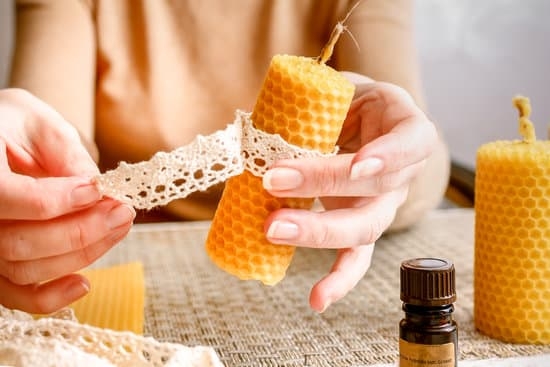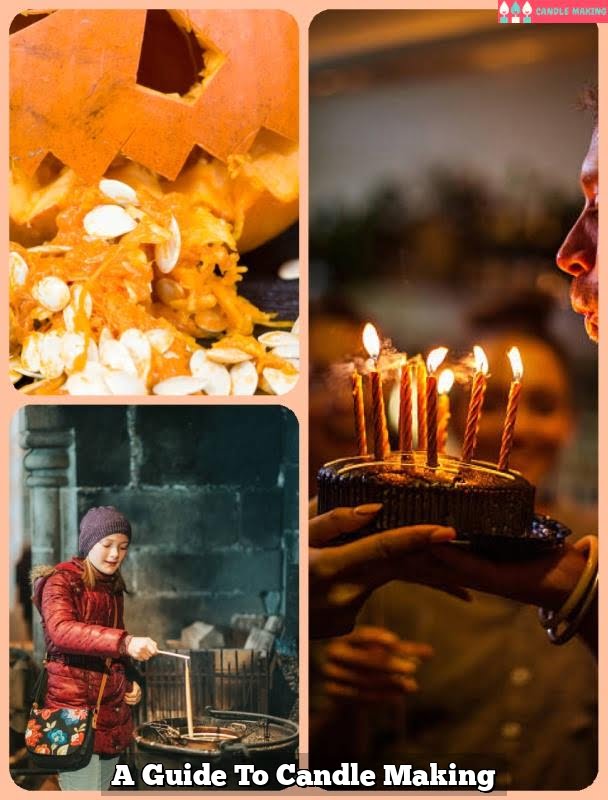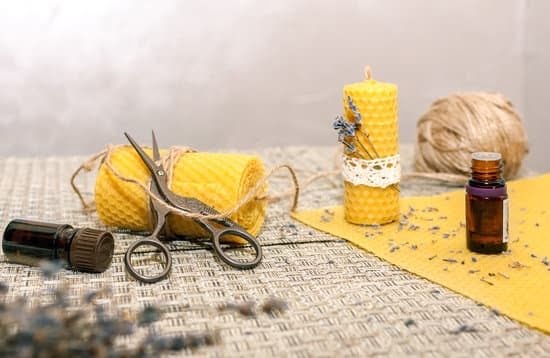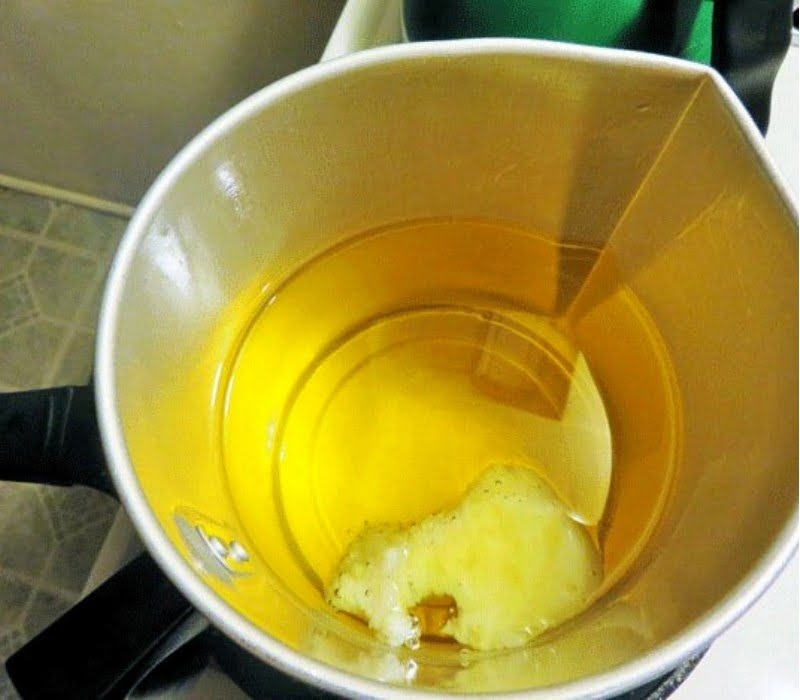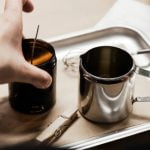Are you interested in learning the art of wax candle making? Whether you’re looking to create beautiful, aromatic candles for your home or start a small business, this Wax Candle Making Guide will provide you with all the essential information and tips to get started.
From the history and evolution of candle making to the types of wax used, essential equipment and supplies, step-by-step guide, troubleshooting common issues, and safety precautions – this comprehensive guide has got you covered.
Candle making has been around for centuries and has evolved into an art form that allows individuals to express their creativity while producing functional and decorative items. Understanding the history and evolution of candle making can provide valuable insights into traditional techniques as well as modern innovations that have revolutionized the craft. In addition, learning about the different types of wax used in candle making will help you make informed decisions when selecting materials for your projects.
In this guide, we will walk you through the essential equipment and supplies needed for candle making, so you can set up your workspace with confidence. You will also find a detailed step-by-step guide to making your own wax candles, along with tips and tricks to perfecting your skills.
Whether you’re a beginner or an experienced crafter looking to enhance your knowledge, this article will equip you with everything you need to embark on your wax candle making journey.
History and Evolution of Candle Making
The history and evolution of candle making is a fascinating journey that dates back to ancient times. Before the invention of electricity, candles were the primary source of light for people around the world. The use of candles can be traced back to as early as 3000 BC in Egypt and Crete, where they were made from animal fats. Over time, the process of candle making has evolved significantly, leading to the wide variety of candles available today.
Early Candle Making Methods
In ancient times, candles were typically made from tallow, which is rendered animal fat. The process involved dipping a wick repeatedly into the melted tallow until a thick layer formed around it. This method was labor-intensive and resulted in low-quality candles that produced a smoky flame and an unpleasant odor when burned.
Advancements in Candle Making
Throughout history, improvements in candle making have been driven by advancements in technology and access to different materials. The introduction of beeswax and plant-based waxes like soy and palm wax revolutionized the quality of candles, offering cleaner-burning options with pleasant fragrances. With the industrial revolution came mass production techniques that made candles more affordable and widely available to the general population.
Modern Candle Making Practices
Today, candle making has become a popular hobby and art form for many people. With access to various types of waxes, fragrances, and dyes, individuals can create unique and personalized candles at home. The evolution of candle making has also led to innovative designs such as container candles, pillar candles, and decorative shapes that serve both functional and aesthetic purposes. As technology continues to advance, we can expect even more exciting developments in the art of candle making.
Types of Wax Used in Candle Making
When it comes to making your own wax candles, one of the most important decisions you’ll need to make is what type of wax to use. There are several different options available, each with its own unique characteristics and benefits. Here are some of the most popular types of wax used in candle making:
Paraffin Wax
Paraffin wax is one of the most commonly used waxes for candle making. It is a byproduct of petroleum refining and is known for its excellent scent throw and ability to hold color well. Paraffin wax comes in various melting points, making it suitable for different types of candles such as pillars, votives, and container candles.
Soy Wax
Soy wax is a natural alternative to paraffin wax, made from soybean oil. It is biodegradable, renewable, and has a clean burn with minimal soot. Soy wax also has a great scent throw and can hold color well, making it a popular choice for environmentally conscious candle makers.
Beeswax
Beeswax has been used for centuries in candle making due to its natural honey-like aroma and bright flame. It is sourced from beehives and is known for its long-lasting burn time and air-purifying properties. Beeswax candles have a warm glow and are often chosen for their natural appeal.
In addition to these three main types of wax, there are also alternatives such as coconut wax, palm wax, and gel wax that offer unique characteristics for specific candle-making purposes. When choosing the right type of wax for your candles, consider factors like fragrance load, burn time, appearance, and sustainability to ensure you create high-quality candles that meet your needs.
Essential Equipment and Supplies for Candle Making
Basic Equipment
To start your wax candle making journey, you will need some basic equipment and supplies. These include a double boiler or a pot to melt the wax, a thermometer to monitor the wax temperature, a stirring utensil such as a spoon or spatula, and a heat source such as a stove or hot plate. Additionally, you will need molds for shaping your candles, wicks for burning, and a scale for measuring the wax and fragrance oils.
Types of Wax
When it comes to choosing the right wax for your candles, there are several options available. The most commonly used waxes are paraffin wax, soy wax, and beeswax. Paraffin wax is readily available and easy to work with, while soy wax is known for its eco-friendly properties.
Beeswax, on the other hand, has a natural fragrance and produces long-lasting candles. Each type of wax has its own unique characteristics, so it’s important to consider your preferences and the intended use of the candles before making your selection.
Additional Supplies
In addition to the basic equipment and wax, there are some additional supplies that can enhance your candle making experience. These include fragrance oils or essential oils for adding scent to your candles, dye blocks or color chips for creating vibrant colored candles, and containers if you prefer to make container candles instead of molded ones.
It’s also important to have a designated workspace with proper ventilation and protective gear such as gloves and goggles to ensure safety during the candle making process.
By familiarizing yourself with the essential equipment and supplies needed for candle making, you can embark on this fulfilling hobby with confidence and creativity. Whether you choose paraffin wax for classic candles or soy wax for an eco-friendly option, having the right tools at hand will set you up for success in crafting beautiful homemade candles.
Step-by-Step Guide to Making Your Own Wax Candle
Making your own wax candles can be a fun and rewarding hobby. Whether you’re creating them for personal use or as gifts for friends and family, it’s important to follow a step-by-step guide to ensure that your candles turn out just the way you want them. Below, we’ve provided a simple yet comprehensive wax candle making guide to help you get started on this wonderful craft.
Before you begin making your own wax candles, it’s essential to gather all the necessary equipment and supplies. This includes wax, wicks, a double boiler or melting pot, a thermometer, fragrance oils or essential oils (if desired), and color dyes (if you want to add color to your candles). Once you have everything you need on hand, you can start the candle making process.
The first step in making your own wax candle is melting the wax. Using a double boiler or melting pot, heat the wax to the appropriate temperature according to the type of wax you are using. It’s important to monitor the temperature closely with a thermometer to avoid overheating and damaging the wax. Once the wax is melted, you can add any fragrance oils or color dyes at this stage if desired.
Next, prepare your containers by securing the wick in the center using a wick holder or chopsticks. Carefully pour the melted wax into the containers and allow them to cool and harden. And just like that, you’ve successfully made your own wax candles.
Tips and Tricks for Perfecting Your Candle Making Skills
When it comes to perfecting the art of wax candle making, there are a few tips and tricks that can make all the difference in the quality and beauty of your homemade candles. Here are some expert tips to help you take your candle making skills to the next level:
1. Choose the Right Wax: The type of wax you use can greatly impact the quality of your candles. Whether you prefer paraffin, soy, beeswax, or other types of wax, it’s important to select high-quality wax for optimal results.
2. Proper Wick Placement: Ensuring that your wick is properly centered and straight in the candle container is crucial for an even burn and a beautiful finished product. Use wick centering devices or simply gently guide the wick into place as the wax begins to set.
3. Experiment with Fragrances and Colors: Don’t be afraid to get creative with adding fragrance oils and color dyes to your candles. Experiment with different combinations and concentrations to find the perfect scent and hue for each batch of candles.
4. Mastering Temperature Control: Achieving the ideal temperature when melting and pouring your wax is essential for successful candle making. Invest in a good quality thermometer and follow temperature guidelines closely to avoid issues such as frosting or poor scent throw.
5. Patience is Key: One of the most important tips for perfecting your candle making skills is to have patience. Allow your candles to cool and cure properly before lighting them, as this can greatly affect their burn time and overall performance.
By incorporating these tips into your wax candle making process, you can elevate your skills and create stunning, high-quality homemade candles that you can enjoy or share with others. Keep practicing and experimenting with different techniques to continue improving your craft.
Adding Fragrance and Color to Your Candles
One of the most exciting aspects of making your own wax candles is the ability to add fragrance and color to create unique and personalized creations. Adding scents and colors can elevate your homemade candles to a professional level, and there are many options available for you to explore.
When it comes to fragrance, there are countless essential oils and fragrance oils that you can use to scent your candles. Essential oils are natural extracts from plants and flowers, while fragrance oils are synthetic oils that have been specially formulated for candle making.
Both types of oils come in a wide variety of scents, from floral and citrusy to woody and spicy. It’s important to note that not all fragrances are suitable for candle making, so be sure to select oils that are specifically labeled as being safe for use in candles.
In terms of adding color to your candles, there are several options available as well. Dye chips or blocks specifically designed for candle making come in a range of vibrant hues and can be mixed together to create custom colors.
Another option is using natural colorants such as powdered herbs or spices, which can produce beautiful earthy tones. Whether you’re looking for bright and bold colors or subtle pastels, experimenting with different dyes and pigments can open up endless possibilities for creating visually stunning candles.
| Fragrance Oils | Dye Options |
|---|---|
| Wide variety of scents | Dye chips or blocks |
| Synthetic oils formulated for candle making | Natural colorants like powdered herbs or spices |
| Available in floral, citrusy, woody, spicy scents | Customizable mixing options for unique colors |
Troubleshooting Common Candle Making Issues
Even with the best planning and execution, candle making can sometimes present challenges. It’s important to be prepared for these common issues that may arise during the process. One common problem is tunneling, where the candle burns straight down in the middle, leaving a thick ring of wax around the edges. To avoid tunneling, try using a larger wick or burning your candle for longer periods to allow the wax pool to reach the edges.
Another issue that you might encounter is frosting, which is when the wax develops a white powdery layer on the surface. This can happen when making candles with soy wax or natural waxes. To minimize frosting, try pouring your candles at a slightly higher temperature or cooling them at a slower rate. Additionally, you can use a heat gun to smooth out any frosting that forms after your candles have cooled.
Sinking wicks are another common problem in candle making. This occurs when the wick moves off-center or falls into the wax as it melts, resulting in an uneven burn. To prevent this issue, try using wick centering devices or carefully hand placing the wick in the center of the container and securing it in place before pouring the wax. These troubleshooting tips will help you overcome common candle making issues and achieve professional-looking results.
| Common Issue | Troubleshooting Tip |
|---|---|
| Tunneling | Use a larger wick or burn your candle for longer periods |
| Frosting | Pour candles at slightly higher temperature or use a heat gun to smooth out any frosting |
| Sinking Wicks | Use wick centering devices or carefully hand place and secure the wick before pouring wax |
Safety Precautions for Candle Making at Home
When making wax candles at home, it’s important to prioritize safety to prevent accidents and ensure a successful candle making process. Here are some essential safety precautions to keep in mind:
Work in a Well-Ventilated Area
Make sure to work in a space with good air circulation to avoid inhaling fumes from the melting wax and fragrance oils. This can help prevent dizziness, headaches, and other health issues that may arise from prolonged exposure.
Use Protective Gear
Wear protective gear such as gloves and aprons to shield your skin from hot wax and potential splatters. Safety goggles can also protect your eyes from any accidental splashes or spills.
Keep Flammable Items Away
Ensure that flammable items such as paper towels, fabric, or any other combustible materials are kept away from the heat source when melting the wax. This reduces the risk of fire hazards during the candle making process.
Have a Fire Extinguisher on Hand
It’s always better to be safe than sorry, so having a fire extinguisher nearby is crucial in case of emergencies. Familiarize yourself with how to use it properly before starting your candle making project.
By following these safety precautions, you can enjoy the art of wax candle making at home while minimizing potential risks and creating a safe environment for yourself and those around you. Always prioritize safety to have a positive and fulfilling candle making experience.
Conclusion and Final Thoughts on Wax Candle Making
Making your own wax candles can be a rewarding and fulfilling hobby. Not only is it a creative outlet, but it also allows you to customize your candles exactly to your liking, from size to color to fragrance. Whether you’re making candles for personal use or as gifts for friends and family, following a wax candle making guide can lead to beautiful and high-quality results.
Here are some final thoughts on wax candle making:
- Practice Makes Perfect: Don’t be discouraged if your first few attempts at candle making don’t turn out exactly as you hoped. Like any skill, candle making takes practice. Keep experimenting with different waxes, scents, colors, and techniques until you find what works best for you.
- Safety First: Always prioritize safety when working with hot wax and open flames. Make sure to work in a well-ventilated area, keep flammable materials away from your work space, and never leave melting wax unattended.
- Share Your Knowledge: Once you’ve mastered the art of candle making, consider sharing your knowledge with others. You could teach a class or workshop, start a small business selling your handmade candles, or simply pass on your newfound expertise to friends who are interested in learning the craft.
By following this wax candle making guide and incorporating these final thoughts into your practice, you’ll be well on your way to creating beautiful and fragrant homemade candles that bring joy to yourself and those around you. Happy crafting.
Additional Resources for Further Learning and Inspiration
In conclusion, the art of wax candle making is a timeless craft that continues to captivate and inspire people around the world. From its ancient origins to the modern-day techniques and trends, candle making has evolved into a popular hobby and creative outlet for many individuals.
As you embark on your journey into the world of wax candle making, it’s important to remember that there are endless opportunities for learning and growth in this craft. Whether you’re interested in traditional methods or experimenting with innovative designs, there are countless resources available to expand your knowledge and spark new inspiration.
With the right tools, materials, and guidance, you can create beautiful and unique candles that reflect your personal style and creativity. By utilizing the information provided in this guide as well as seeking out additional resources for further learning and inspiration, you’ll have everything you need to elevate your candle making skills and explore new possibilities within this time-honored art form.
In closing, embrace the endless potential of wax candle making and let your imagination run free. Whether you’re a novice or experienced crafter, there’s always something new to discover in the world of candle making. So gather your supplies, experiment with different techniques, and unleash your creativity as you delve into the satisfying and rewarding world of wax candle making.
Frequently Asked Questions
How Many Candles Does 1 Lb of Candle Wax Make?
The number of candles that 1 lb of candle wax can make depends on the size of the candles being produced. On average, 1 lb of wax can make approximately 4 medium-sized candles.
What Wax Holds Scent the Best?
Soy wax is known for holding scent the best among all types of candle waxes. It has a good scent throw and can hold a high fragrance load, making it a popular choice for scented candles.
What Is the Ratio of Fragrance to Wax for Candles?
The ratio of fragrance to wax for candles varies depending on the type of wax and the specific fragrance being used. As a general guideline, the recommended ratio is about 6-10% fragrance oil to wax, but it’s essential to follow the specific guidelines provided by the fragrance manufacturer for best results.

Welcome to my candle making blog! In this blog, I will be sharing my tips and tricks for making candles. I will also be sharing some of my favorite recipes.

